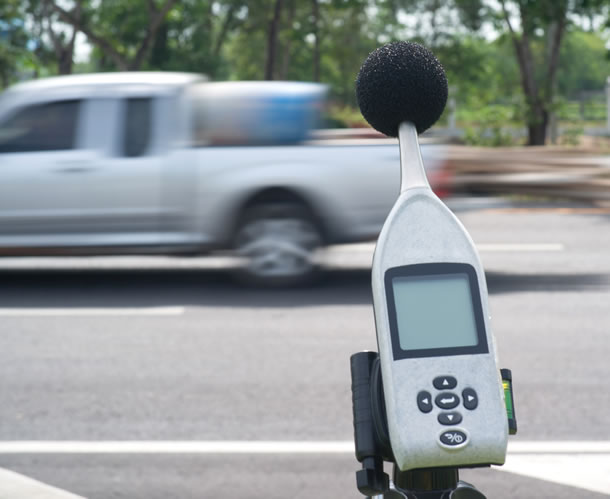Elan Environmental Ltd provide noise impact assessment services in Belfast and Northern Ireland. We offer the latest in acoustic assessment methods and technologies and our services ensure a swift, cost-effective analysis of the impacts of both environmental noise and worksplace noise.




Workplace and Occupational Noise
Over 170,000 people in the UK suffer from deafness, tinnitus and other ear conditions as a result of exposure to workplace or occupational noise.
The Control of Noise at Work Regulations NI (2006) & Safety, Health and Welfare at Work Regulations 2007 dictate the noise action levels and limit values (EEC Directive EEC/86/188)
The aim of an occupational noise assessment survey is to identify the activities within a workplace that may cause daily exposure levels to exceed these action levels. At Elan Environmental, we can consult with you and your organisation to identify what type of workplace noise assessment is required to locate these sources of noise pollution and offer advice on management of these noise levels.
The noise level (LAeq) of any particular machine or working position is measured in dB - or alternatively the Leq is expressed in dB(A) - but this is only the start of the assessment.
Noise Control legislation requires the Daily Personal Exposure Level (LAEP,d), a calculated parameter based on the noise level, and the exposure time of a work to that noise level.
A noise impact assessment is conducted by recording a combination noise indices, including LAFN, LAFmax, LAeq,T, and LAr,T
Our Workplace/Occupational Noise Assessment Services Include
- Noise Assessment Recordings
- Assessment of Personal Daily Noise Exposures
- Personal Noise Exposure Levels using Dose Badges (optional)
- Hearing Protection Provision and Signage review
- Evaluation of Hearing Protection (octave band analyses)
- Recommendations on noise control measures
Environmental Noise Assessments
Environmental noise is the summary of noise pollution from outside, caused by transport, industrial and recreational activities. Noise is frequently described as 'unwanted sound', and, within this context, environmental noise is generally present in some form in all areas of human activity. The effects in humans of exposure to environmental noise may vary from emotional to physiological and psychological.
Noise at low levels is not necessarily harmful; environmental noise can also convey a sense of liveliness in an area, and is not then always considered 'unwanted'. However, the adverse effects of noise exposure (i.e. noise pollution) could include: interference with speech or other 'desired' sounds, annoyance, sleep disturbance, anxiety, hearing damage and stress-related cardiovascular health problems.
As a result, environmental noise is studied, regulated and monitored by many governments and institutions. An environmental noise assessment can determine whether someone is likely to be negatively impacted by noise - for example, a railway line being built beside a housing development. If a noise impact assessment finds any noise issues, measures can be recommended to lessen the impact.

Guidance
Monitoring for compliance with the noise emission conditions of an IPC Licence should be primarily based upon International Standard ISO 1996: Acoustics Description and Measurement of Environmental Noise – or a method approved by the Agency. In certain instances, some of the assessment procedures and methodologies outlined in BS 4142 and BS 5228 (Appendix III) may be utilised as part of the overall strategy.
Environmental Noise Assessment Services
- Environmental noise impact assessments.
- Noise surveys and assessments to characterise a site’s ambient climate for planning applications.
- Noise monitoring at existing sites to determine compliance with planning and operational conditions.
- Liaison with the planning authorities and environmental health departments to determine relevant noise criteria.
Building Acoustic Testing & Design
To demonstrate compliance with the Building Regulations Technical Documents Part E on Sound 2014, construction projects in Ireland now require compulsory sound insulation testing. Technical guidance document Part E (2014) of the Building Regulations 1997 (S.I. no. 497 of 1997) relates to the mitigation of sound transfer between dwellings and rooms within a building. The regulations simply state that walls and floors must have “reasonable resistance” to airborne and impact sound. No consideration is given to the nature or location of the building or potential noise sources.
All new dwellings and extensions to dwellings which adjoin other buildings will require sound insulation tests
Building Acoustic Testing & Design Services
- Internal & external building insulation testing
- Room acoustic testing
- Mechanical services acoustic testing




